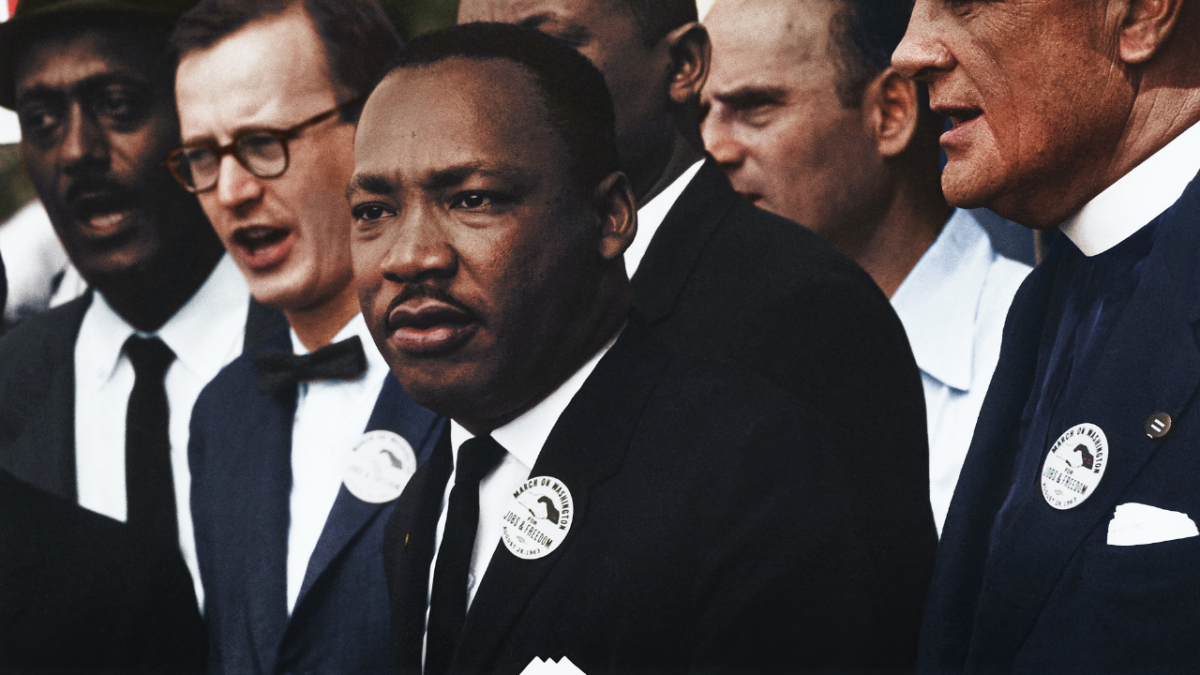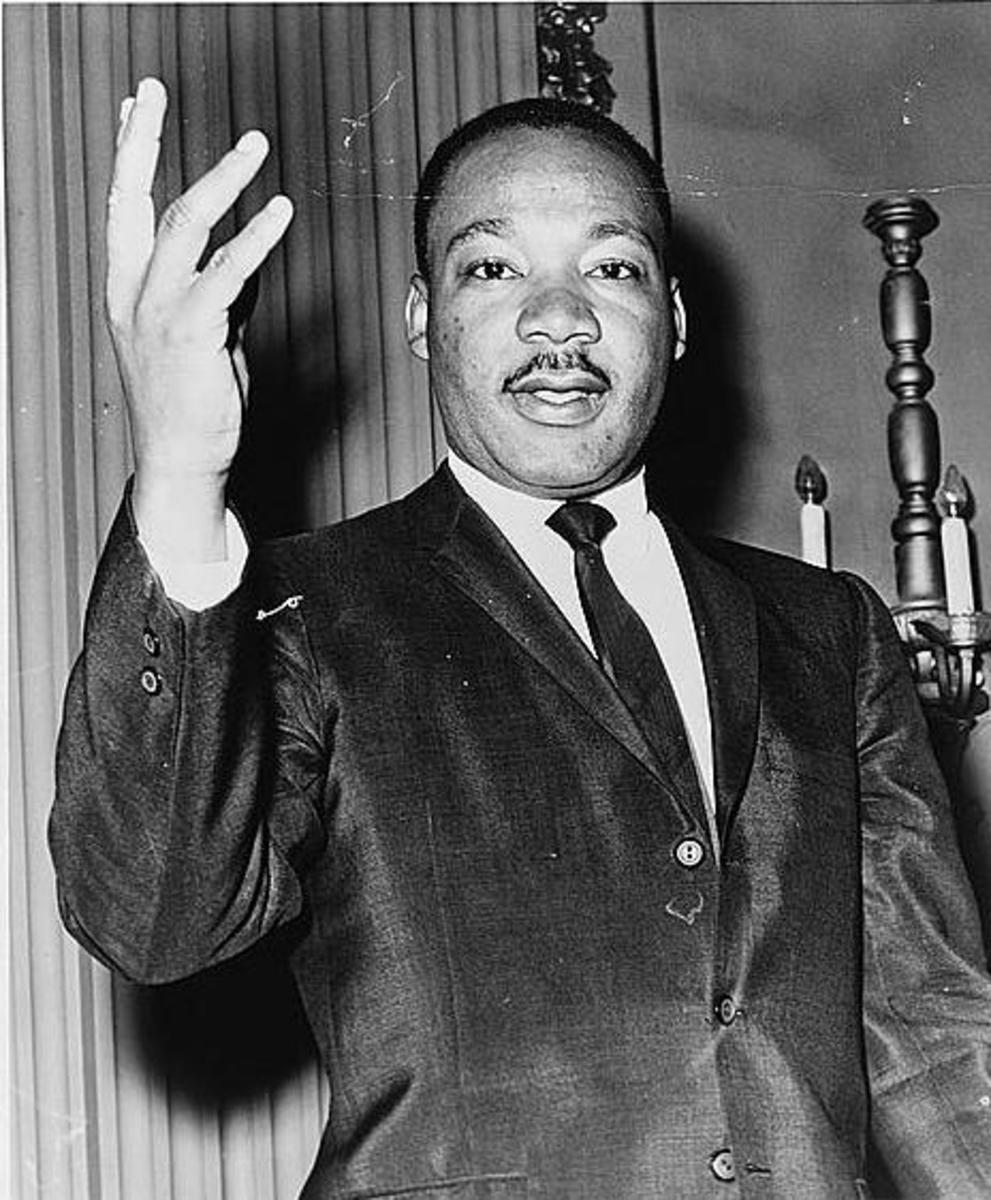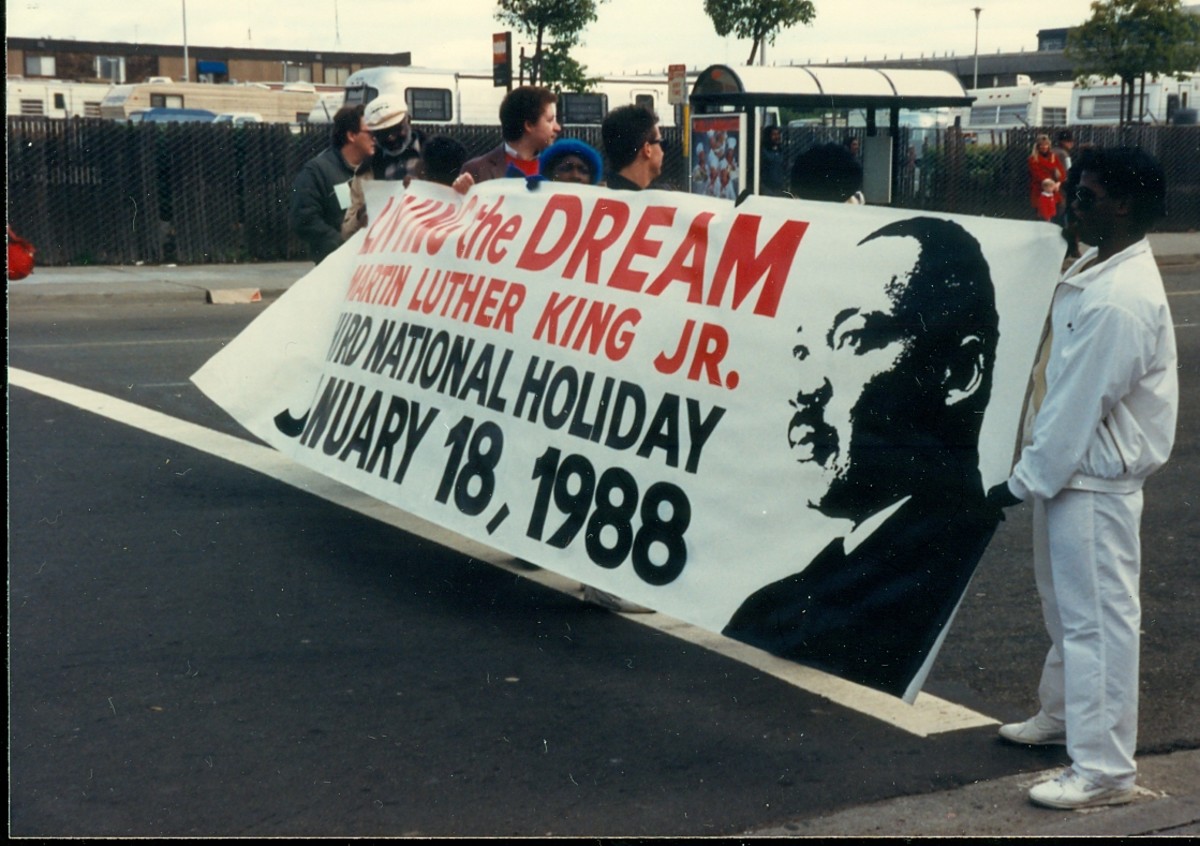Martin Luther King and Fernando Botero
Recently Fernando Botero decided to exhibit a series of paintings depicting horrors of Abo Ghraib. To many in the art world, this came as shock and surprise, because this was not the usual theme for which Botero is so well known. Even those who have not paid a visit to gallery or museum have seen his paintings reproduced as postcards and poster prints. He normally paints joyous landscapes and contented, rotund and voluptuous animal and human characters.
A parallel in similar shock and surprise can be seen when Martin Luther King decided to oppose the American military intervention in Vietnam more than four decades ago. Martin Luther King was a well known Civil Rights activist. His campaign for equality in treatment for all races in American civil society was well known at the time. Therefore, his Vietnam posture in “A Time to Break Silence” speech came in for surprise and shock. His motives were as suspect then as Fernando Botero’s motive today.
The center of activity of King as well as Botero had never been torture, war and violence. Therefore, their respective stands on the issues they took not only lack authority but also give rise to the suspicion that they were trying to influence their audience through persuasive means that Aristotle identified long ago. It might be useful to understand Aristotle’s explanation of rhetoric and its constituent elements called ethos, logos and pathos.
Rhetoric can be understood as an art of writing and speaking effectively. However, this definition can be modified to include not just writing and speaking but any form of expression, as for instance ‘Painting’. Aristotle defines rhetoric as “the faculty of observing in any given case the available means of persuasion.”
The three main forms of rhetoric described by Aristotle are Ethos, Logos and Pathos. Ethos is appeal based on the character of the speaker. If the author of a document is reputable, it will have greater credibility. When the appeal is based on logic or reason, it is known as logos, for example, the scholarly works or the publication in peer reviewed journals. Pathos is appeal based on emotion. Advertisements are pathos driven
Let us now examine the works of Martin Luther King and Fernando Botero. Botero is a successful artist, who enjoys immense popularity. People flock in to see his paintings at various art exhibitions. It is clear that he enjoys authority in the field of art by virtue of his being an excellent artist. Botero is 74, and has been in this career for several decades. Therefore, these two factors combine together to impart to him an aura that few would be able to challenge his work. Botero’s work, irrespective of genre will gain instant popularity and unquestioned validity. This brings us to the notion of ethos. In terms of Aristotalian dialectic, we might say, Botero is trying to make a statement through Abo Ghraib paintings. The statement he makes is persuasive in nature. People are taken in by the weight of his argument because he has knowledge, and expertise, and one might even say, moral authority over the works he has been acclaimed for. It might be pertinent to point out here that according to Aristotle, ethos should be achieved only by what the speaker says, not by what people think of his character before he speaks. There have been other interpreters who have given prominence to overall moral character and prominence of the speaker. The speaker here is Botero. He is telling the American government, “Look! What your army has done in Abo Ghraib”, through his recent paintings. The question is what locus standi does Botero enjoy to authenticate this statement? The answer is ethos. He has knowledge, expertise, and moral authority over the media through which, he is making that statement. Nonetheless, his statement/argument cannot go unchallenged because his statement/painting cannot be pre-judged on the weight of his knowledge and authority, as Aristotle maintained. In fact, his statement is open to criticism on two grounds. First, he has no background in the form of paintings he has begun doing recently. Secondly, by creating the painting/statement he has taken a stand on a political issue, he has no moral authority on, nor has expertise in or knowledge of. Should one argue that these paintings have been done purely for the sake of art in which author depicts emotion without taking any stand, then one might reply that the timing of the work make it suspicious. It may be remembered that ethos does not belong to the speaker but to the audience. One might argue that Botero has used the rhetoric of pathos in his recent work. Pathos appeals to the emotion of the audience. Abo Ghraib paintings depict heartless scenes of painful torture, which is likely to instantly move the audience. And if this was the goal, pathos based argument, as it indeed is, might have persuaded the intended audience. Botero and his work might be compared to Pablo Picasso and Guernica . Botero says, “No one would have ever remembered the horrors of Guernica if not for the painting”. In fact, he doesn’t hide his intention in doing the work he did-a site of 50 large oil paintings depicting the horrors perpetrated by Americans at Iraq’s infamous Abo Ghraib prison. “I, like everyone else, was shocked by the barbarity, especially because the United States is supposed to be this model of compassion.”
Martin Luther King in A Time to Break Silence speech. Martin Luther King can be seen using rhetoric to his greatest advantage in this speech. This speech makes use of all the three elements of rhetoric, that is, ethos, logos and pathos.
Martin Luther King was a respectable national leader at the time he made his speech. So people might listen to him when he decided to ‘break silence’. But he was a Civil Rights activist, not an expert on politics or war. So, many people did in fact question his authority to speak on the subject that he did. But rhetoric doesn’t end there. There are two other elements to it- logos and pathos. In fact, in his speech, he himself raised this question “with what authority was he speaking on Vietnam”, and logically addressed this issue. This was a strategy of hitting two targets with one shot. He used logos to establish his authority to speak on the issue (he was not an expert in). The weapon of logos enabled him to use pathos- yet another argumentative strategy. His speech was highly emotional. In other words, he evoked pathos in his speech, thereby, successfully making use of all the three elements of ethos, logos, and pathos in his arguments. We would like to briefly demonstrate how he successfully achieves the goal of rhetoric in his speech. The very first statement of his speech is about his conscience (pathos). “…my conscience leaves me no other choice…” In the beginning of his speech, he raises the objection, many people have made against him. “Why are you speaking about war, Dr. King? Why are you joining the voices of dissent? Peace and civil rights don't mix, they say. Aren't you hurting the cause of your people, they ask?” King answers these queries to his advantage. “…for such questions mean that the inquirers have not really known me, my commitment or my calling. Indeed, their questions suggest that they do not know the world in which they live.” And further, he says, “I come to this platform tonight to make a passionate plea to my beloved nation. This speech is not addressed to Hanoi or to the National Liberation Front. It is not addressed to China or to Russia”. Analyzing this content for rhetoric, we find that King has used pathos to deflect the objections, by invoking his commitment and calling on one hand, and also used sound reasoning (logos) to claim that he is not speaking on an out rightly political topic that doesn’t fall under his domain. He says that his speech is not addressed to Hanoi, China or Russia. Also, the use of the phrase “passionate plea to my beloved nation” is intended to touch the emotional side (pathos) of his audience. The rest of his speech continues to make use of logos and pathos, but it is the pathos that dominates. Nonetheless, ethos as an argument technique might also be found in his speech, as he wants certain demands be fulfilled by the government on the presumed strength of his leadership role.
Rhetoric is an art of argument discussed by Aristotle. The skills of rhetoric are made use of consciously or unconsciously by speakers. A rhetoric laden speech or expression makes use of elements like ethos, logos, and pathos. We have examined the works of Botero, a highly acclaimed painter, and of Late Martin Luther King, a vocal Civil Rights activist. A common theme running through the work of these men is that both of them do not enjoy the competence and authority to express on the issues they have. As a result, one might ask, would they be able to mould the opinion of their audience? The answer is they have been able to influence their audience through the use of rhetoric in their argument.










